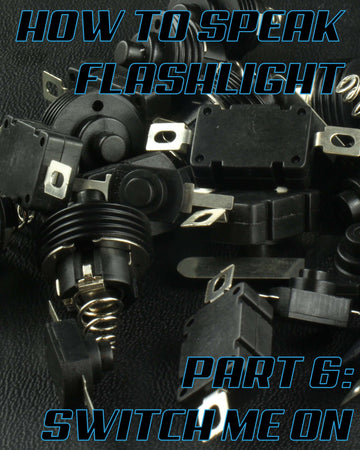So many jokes to be made about switches, turned on, buttons etc that I froze up and couldn’t pick one 😉.
There are five types of switches normally used in flashlights. Mechanical switch’s come in forward clicky, reverse clicky, rotary and twist. There are also electronic switches.
The goal of each type is the same. Make or break the circuit to turn a light on and off.
In the world of high-end custom and low volume production lights that I live in the mechanical clicky’s and twist are most common. Twist being the simplest.
With twist all you’re doing is physically unscrewing some part of the light to break the electrical contact with the battery. It simple, reliable and doesn’t add any extra length to your light. The problem is that its cumbersome and slow. It also generally takes two hands to do which isn’t ideal.
If you have only been around lights for a little while you may have heard the terms forward and reverse clicky. And probably been as confused as I was 😂.
Simply put, forward clicky’s turn the light on as you push the switch down and reverse clicky’s turn the light on when you release the switch.
Forward clicky’s are my favorite setup. They allow you to turn the light on without going through the full range of the switch stroke. The advantage being that if you’re like me and only need a flash of light most of the time it’s a much faster system. In a multi-mode light, you must choose your mode before fully turning your light on. I see that as an advantage, others don’t like it.
Reverse clicky’s don’t allow for a momentary activation. Once they’re turned on, they are on. Once they are on you can momentarily deactivate the switch by pushing it part way down. This is how you change modes with one.
It’s said in the flashlight world that reverse clicky’s can handle more current. There doesn’t seem to be any evidence from switch makers to support that rumor. Power handling is entirely due to the designs of the contacts and nothing to do with the switching style.
Next time, electronic switches.
What’s your favorite switching style and why? Let us know in the comments

1 comment
Forward clicky please!